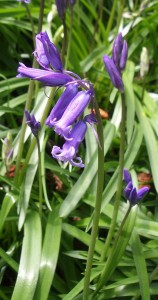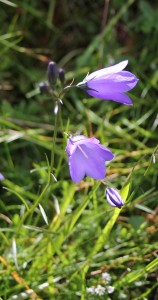When the RBGE announced the results for the public vote on Scotland’s Big 5 Favourite Plants the Scottish Bluebell came second to the Scot’s Pine. Since then, there has been discussion around which species was intended, as some people were familiar with the Scottish common name and others assumed it was referring to a different flower. This illustrates the confusion that can arise with common names. Before plant names were published people would have used their own names for their local plants which were an essential part of their environment. Many were collected for food, or for medicinal use and children played with them. All over the UK many different names would have been used. But once flowers were described in books they were given a standardised scientific name and gradually within the UK the common names also became standardised. The Botanical Society of Britain and Ireland* (BSBI) has an official list which is designed to avoid misunderstanding! There has been a gradual decline in the use of traditional names although many are still used. Problems arise when the same name means different things to different people. Bluebell is a very good example as people insist that the name they first learnt is the correct one, but in the south of Britain people are more likely to mean the spring-flowering Bluebell Hyacinthoides non-scripta, which grows from a bulb and is usually associated with woods. This same plant also grows in Scotland where some people would call it Wild Hyacinth. In Scotland, the name Scottish Bluebell is used for a summer-flowering species in the bellflower family which is Campanula rotundifolia. Further south the latter species is called Harebell and that is its ‘official’ name which is used in most plant identification books. While scientific names need to be standardised it is good to also use local names as they are part of our cultural heritage.
Why not come on a plant identification course at the Botanic Garden and learn how to tell the difference? http://www.rbge.org.uk/education/horticulture-botany-and-environment/botany
* The society has recently changed its name it was previously The Botanical Society of the British Isles



1 Comment
1 Pingback